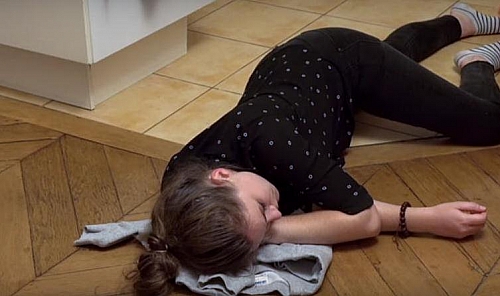Convulsions can be defined as the involuntary movements of the body due to abnormal contraction and relaxation of muscles resulting from the abnormal electrical activity of the brain. Convulsions are also known as Fits and are also used interchangeably to mean Seizures but Convulsion is not the same as Seizure even though these words are used interchangeably. The difference between convulsions and seizures are explained below.
Table of Contents
Convulsion Meaning
Convulsion is the violent and uncontrolled movement of the body caused by abnormal contraction and relaxation of skeletal muscles. It occurs due to abnormal discharge of neurons in the brain and it is often associated with loss of consciousness.
Differences between Convulsions and Seizures
When an abnormal firing of neurons occur in the brain, it causes abnormal response by the body. It could cause transient loss of consciousness or muscle contraction; sometimes it may just affect just facial muscles or cause some signs that may not even be obvious. When it causes muscle contractions and relaxations leading to abnormal jerky movements of the body, this is referred to as Convulsion. Sometimes, these abnormal firing of neurons do not cause jerky body movements and this therefore is called Seizures. There are different types of seizures: some associated with convulsions and some do not have convulsions. Seizures therefore are manifestations of the abnormal electrical activities going on in the brain that may manifest with convulsion.
Convulsions Symptoms and Signs
- Blackout – that is often brief
- Confusion
- Drooling of saliva from the mouth
- Loss of bowel control leading to passing of stool
- Loss of bladder control leading to passing of urine on the body
- Sudden violent shaking of entire body
- Uncontrollable muscle spasms
- Temporary cessation of breathing
- Loss of consciousness
Types of Convulsions
- Febrile convulsions
- Afebrile Convulsions
Febrile Convulsions
Febrile convulsion is the abnormal violent contraction and relaxation of skeletal muscles occurring mostly in a child of 6 months to 5 years that is associated with fever and not caused by an intracranial lesion. Febrile convulsions are the most common seizure disorders during childhood. Febrile convulsions in children are mostly caused by infections such as acute otitis media, malaria, upper respiratory tract infections, Measles, Urinary Tract Infections (UTI) etc.
Afebrile Convulsions or Afebrile Seizures
Afebrile convulsions are not associated with fever and could be of intracranial origin or any systemic disease.
Convulsions Causes
- Epilepsy/Seizures
- Uremia
- Eclampsia (causes convulsion in pregnancy)
- Rabies
- Tetanus
- Strychnine poisoning
- Cerebral tumor (Tumors in the brain)
- Meningitis
- Stroke
- Drug abuse
- Alcohol abuse
- Hypoglycemia (Low blood sugar)
- Head injury
- Vitamin B6 (pyridoxine) deficiency
Convulsion First Aid and Precaution
- Loosen any tight clothing around the neck to prevent strangulation
- Move patient away from danger such as move patient away from fire, stones, or any harmful object nearby should be moved and if possible the head should be placed on a pillow
- Do not inserted any object such as spoon or wood into patients mouth during a convulsion
- Do not try holding the patient down or restraining the movements
